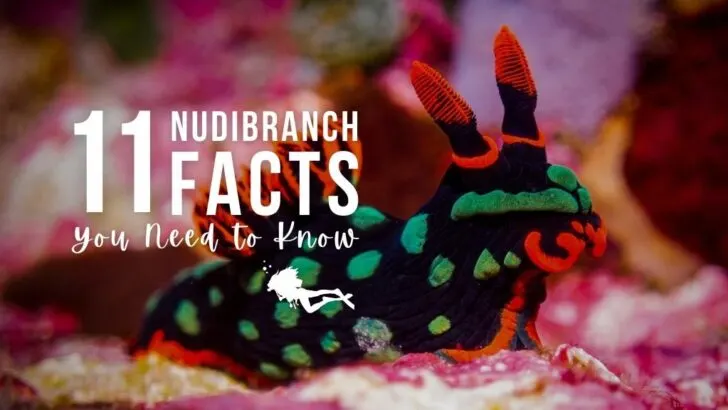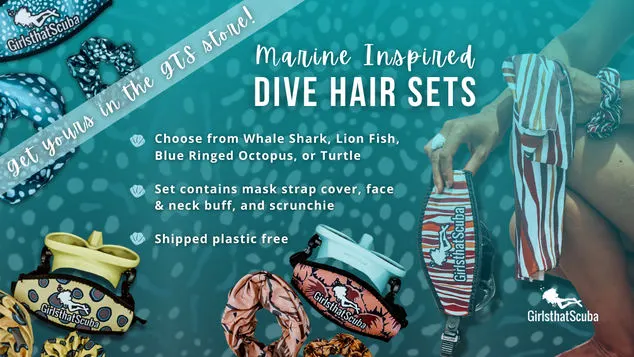If you’ve ever heard a diver asking for “nudi pics“, it’s not what you think. They’re probably asking for a snap of a colourful nudibranch! But what are these mysterious creatures? We’ll explain here as we run through our top nudibranch facts.
1. There are more than 3,000 species of nudibranchs
Nudibranchs, or sea slugs, are a type of soft-bodied marine animal that belong to the Mollusca phylum. The ‘nudi’ part of the name means naked, and the ‘branch’ means gills. This is because adult nudibranchs lack a protective shell, leaving their breathing apparatus exposed.
More than 3,000 nudibranch species have been identified. However, this number is constantly rising, with 14 species discovered by a single diver in 2022.
2. Nudibranchs come in all shapes and sizes
Despite their small size, nudibranchs are some of the most captivating creatures on our planet. They come in a huge range of colour schemes, and they’re famous for their striking exterior patterns and funky-shaped protrusions.
Although they’re never enormous, nudibranch species do vary when it comes to size. For instance, one of the largest nudibranch species, the Spanish dancer (Hexabranchus sanguineus), can grow up to 60cm in length. In contrast, nudibranchs species in the Dotos genus rarely grow longer than 1.5cm.
3. Not all nudibranchs breathe the same way
Most nudibranchs can be categorised into one of two suborders – aeolid or dorid nudibranchs. A key difference between the groups is how they breathe.
Aeolid nudibranchs can take up oxygen from surrounding water directly through their skin. They have soft protrusions (known as cerata) running down their backs.
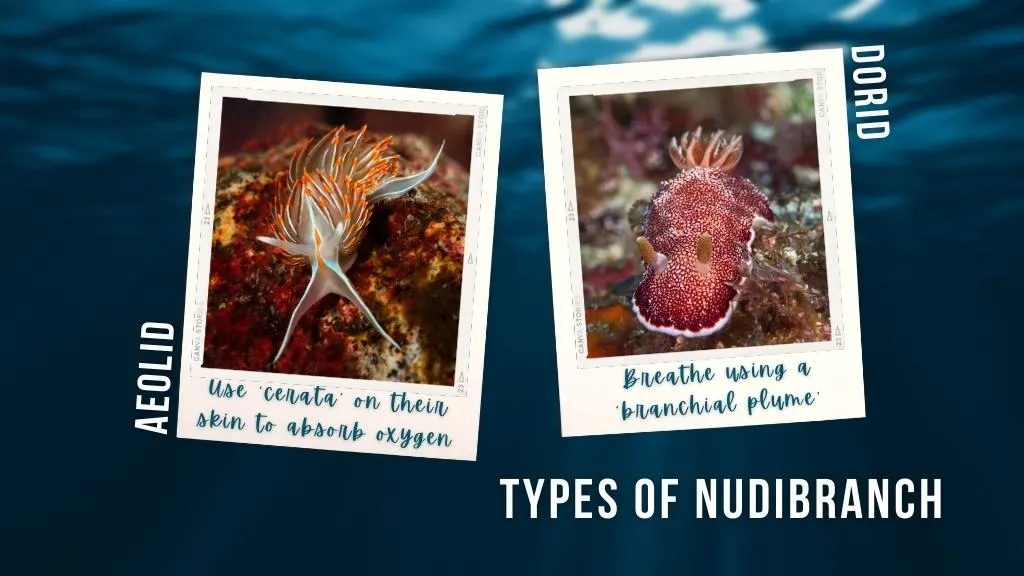
The cerata increase the surface area of nudibranch skin. This means oxygen can be absorbed at a faster rate. Cerata come in a range of shapes, including complicated branched structures.
Dorid nudibranchs are the most common type of nudibranch. Their bodies lack cerata and are typically much smoother than those of aeolid nudibranchs.
Dorid nudibranchs generally breathe using a tuft of feather-like gills that surround their anus. These ‘feathers’ are known as the branchial plume, and some species can retract them inside a protective pocket of skin when needed.
4. You can find nudibranchs almost everywhere
With more than 3,000 different species, it’s not surprising that nudibranchs live across a huge range of environments.
Like many scuba divers, nudibranchs thrive in the shallow warm waters of the tropics. Yet they can also be found as far north as the Arctic and as far south as Antarctica.
What’s more, several deep-sea nudibranch species have been reported. And here’s one of the best facts about nudibranchs – one species (Dendronotus claguei) can survive an astounding 2,400 metres (7,800 feet) below the water’s surface!
Despite being able to survive in some extreme environments, you won’t find any nudibranchs in freshwater. Brackish water is water that’s saltier than freshwater but less salty than the sea. A few nudibranchs can survive in brackish water, but most are strictly saltwater-only species.
Check out some of our favourite destinations to dive with Nudibranchs:
5. Nudibranchs are carnivores… and cannibals!
Sea slugs are known for their varied, and often carnivorous, appetites. They’ll eat anemones, coral, hydroids and sponges. Although these all look like plants, they are in fact animals.
But it doesn’t stop there… some sea slug species will even feast on fellow nudibranchs from time to time!
6. Nudibranchs have lots of nicknames
As one of the most colourful creatures in the sea, nudibranchs have long caught the attention of scuba divers. Over time, many of them have earned affectionate nicknames based on their unique appearances.
One of the best-known nudibranch nicknames is the ‘Spanish Dancer’ (Hexabranchus sanguineus) – a large red nudibranch that resembles the ruffles of a Spanish dress when it moves.
Another species (Thecacera pacifica) is orange-yellow and features black tips on several of its protrusions, giving rise to the name the ‘Pikachu nudibranch’.
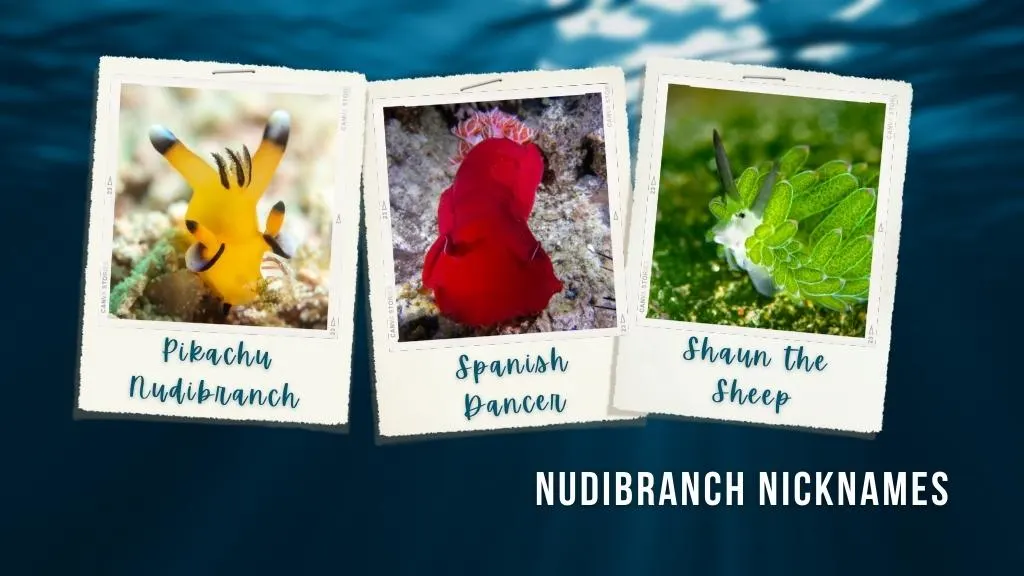
‘Sea bunny’ is used to describe a particularly cute nudibranch (Jorunna parva) thanks to its furry appearance and black-and-white ‘ears’ (which are actually rhinophores).
There’s also the much loved ‘Shaun the Sheep’ nudibranch, named after its resemblance to an adorable British children’s animated character. The Costasiella kuroshimae is often only 1-5mm in length, so it takes a keen eyed macro diver to spot one!
7. Nudibranchs have male and female reproductive organs
Most nudibranchs are thought to be simultaneous hermaphrodites. This means that they have male and female reproductive organs at the same time (rather than males turning female or vice versa).
Typically, nudibranch will both donate and receive sperm during copulation. This is super handy for nudibranchs because it enables them to mate with any nudibranch they come across. After all, if you move at the speed of a slug, it’s important to make the most of any chance for romance!
8. Nudibranchs have some cunning defence mechanisms
The lack of a protective shell means that nudibranchs rely on a range of alternative defence mechanisms to protect themselves from predators. And these mechanisms make for some awesome nudibranch facts.
Some species are thought to rely on their brightly coloured patterns, which warn predators that they may be poisonous. Other species, like the Scyllaeidae pelagica, have taken the subtler approach of growing appendages that help them to blend in with their surroundings instead.
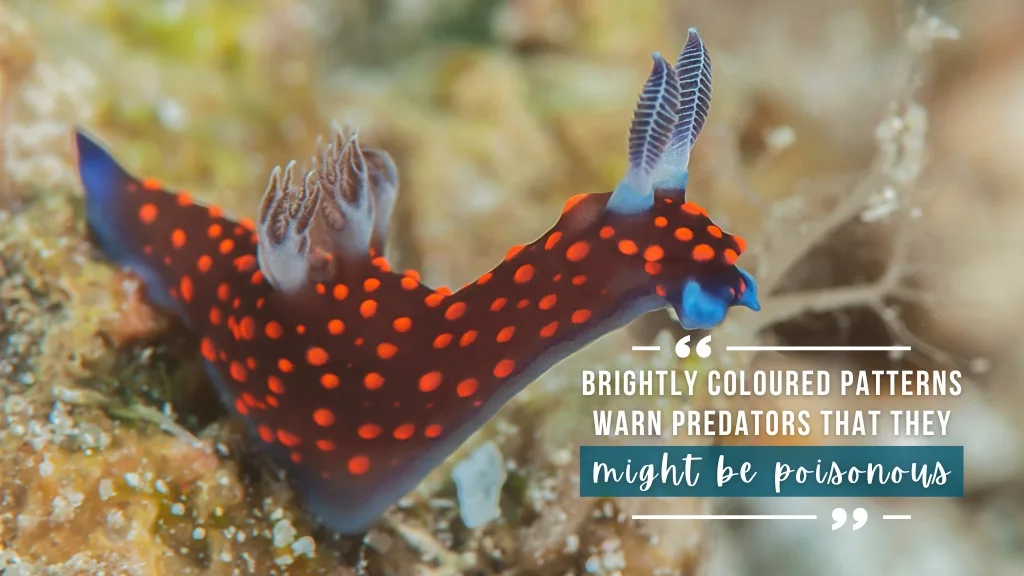
Craftier mechanisms include the ability of nudibranchs to steal the defences of their prey. Jellyfish, sea anemones, corals and other cnidarian relatives feature tentacles lined with cells known as cnidocytes. These cells launch highly venomous harpoon-like structures, called nematocysts, to deter potential predators and capture food.
Certain nudibranch species produce a mucus trail (just like slugs on land) that renders them immune to nematocysts. This means nudibranchs can ingest the venomous cells without coming to any harm.
However, instead of digesting the nematocysts, nudibranchs redirect them to their cerata to defend themselves – pretty sneaky!
As dorid nudibranchs lack cerata, they are more likely to produce their own toxins or release stored toxins into the water when threatened.
9. Nudibranchs can shed body parts
Nudibranchs are known to exhibit autotomy – the ability to sacrifice certain body parts when under threat. This process varies wildly across different nudibranch species.
Some nudibranchs will shed their cerata, others their tail, and some will even lose entire chunks of their mantle (the thick protective layer on their backs). Once separated, these body parts can wriggle around for extended periods of time, and some will even attach themselves to a predator.
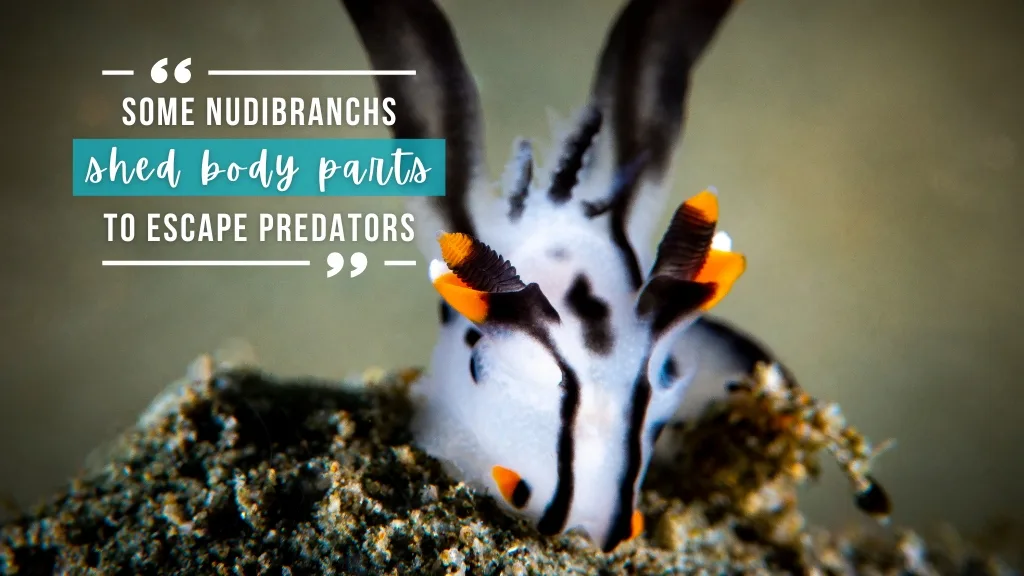
It is hoped that these severed body parts will distract the predator for long enough for the nudibranch to escape, but it’s not always successful.
And now it’s time for one of our strangest nudibranch facts. They don’t only shed body parts to escape predators – some species shed the tip of their penis after mating!
In fact, some species can mate, shed the tip of their penis, and mate again… all within a 24-hour period. The ‘back-up’ length of penis is coiled away internally, ready to replenish the penis after copulation.
10. Nudibranchs have very short lifespans
Just like the beautiful butterfly, mesmerising nudibranchs only roam the plant for a short time. They typically live just 4 to 5 months, although some species can survive for up to 1 year.
11. Nudibranchs are helping scientists track climate change
Although we wish nudibranchs stuck around for a bit longer, their short lifespans make them very useful to scientists. As they live for such short periods, nudibranchs must respond rapidly to environment changes.
This means that they can be used to monitor environmental changes. For instance, if nudibranchs are found in areas that were previously too cold for them to survive, it could indicate that the water temperature in that area has increased.
What’s your favourite fact about nudibranchs? Share this list on socials and tag @girlsthatscuba to let us know!

About the Author
Rose has spent the last few years living in Europe, the Seychelles and Kenya, working as a dive instructor, writer and conservationist. She’s back in the UK at the moment and is slowly acclimatising to cooler waters!

